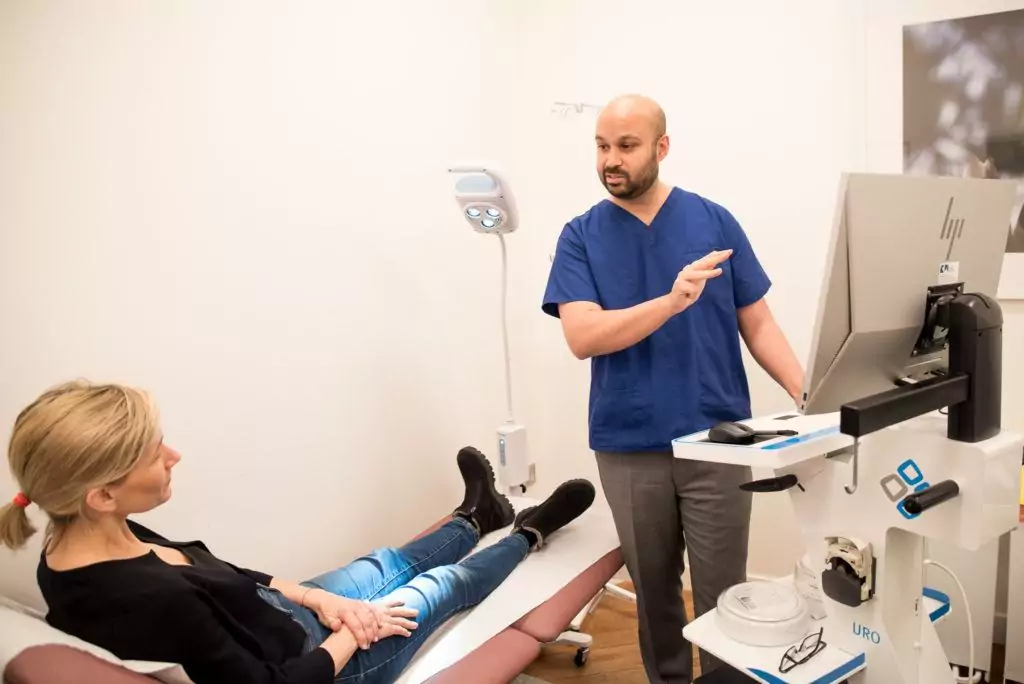How Pregnancy and Childbirth Affects the Bladder

Pregnancy and childbirth can cause significant stress on the female pelvic floor, leading to a range of urinary symptoms such as incontinence, urgency, and difficulty fully emptying the bladder. These symptoms can significantly impact a woman’s quality of life, but they are becoming increasingly recognized as functionally manageable and curable.
Stress urinary incontinence (SUI) is the most common urinary symptom in pregnancy, affecting up to 75% of pregnant women. It is the involuntary loss of urine due to physical exertion such as lifting, coughing, or sneezing. Evidence has shown that a vaginal birth may lead to a higher longer-term risk of SUI than after a caesarean section. Women should always discuss with their obstetrician the most suitable mode of delivery for them in this context if they are symptomatic. The mainstay of treatment during and after pregnancy is pelvic floor muscle training, often guided by a specialist physiotherapist. Vaginal devices, procedures or surgery is not usually recommended during pregnancy or until the woman’s family is complete.
Overactive bladder (OAB) affects up to 40% of pregnant women and is characterized by a sudden urge to pass urine, which may be associated with increased daytime or nighttime frequency and even incontinence. Behavioral and lifestyle modifications are usually successful at managing these symptoms, along with bladder retraining and pelvic floor exercises. Occasionally there is
a place for medication such as oral tablets or Botox injections to the bladder.
Urinary tract infections (UTI) affect around 8% of pregnancies and can mimic the symptoms of OAB. Whilst
rarer than OAB or SUI, if severe, UTIs can complicate pregnancy with preterm delivery, miscarriage, sepsis.It is vital that a woman’s urine is checked at each antenatal visit in pregnancy as often features of UTI can be picked up sooner than symptoms present. Low-dose antibiotics for a medium to longer-term course are recommended for recurrent UTIs in pregnancy, guided by the obstetrician or urogynecologist. Hormone changes during and after pregnancy have been shown to directly affect the normal levels of healthy bacteria within the bladder and oestrogen replacement is an evidenced based intervention shown to be of benefit in reducing recurrent UTIs following childbirth.
Difficulty passing urine or urinary retention (UR) is rarer but can be problematic in pregnancy and childbirth. UR can be as present in up to 20% of women following child birth and many factors have been found to be involved, including mode of delivery (i.e. forceps or caesarean section), if the mum had an epidural, how long the labour was and even severe constipation
and pain. Management is pragmatic, addressing the causes, advising on ‘timed voiding’, and occasionally temporarily placing a catheter into the bladder to relieve and rest.
As we learn more about the causal effects of pregnancy and childbirth on the bladder and devise scientifically backed tools to predict and prevent their symptoms, clinicians caring for pregnant and postpartum women can more effectively treat these conditions. Encouraging women to talk more openly about them and seek the appropriate expertise in managing their symptoms ultimately prevents longer-term consequences of what is usually a temporary condition.


